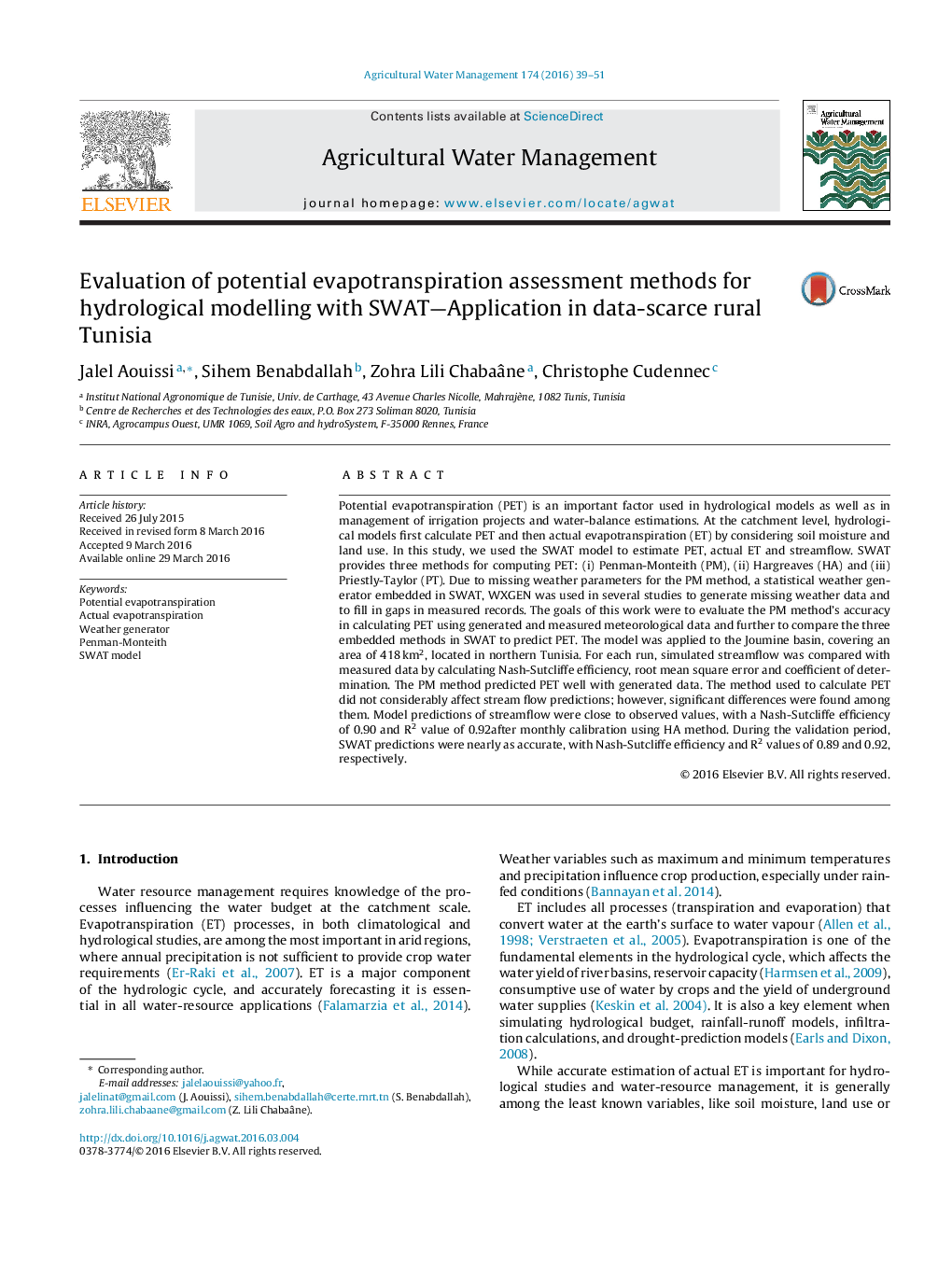| کد مقاله | کد نشریه | سال انتشار | مقاله انگلیسی | نسخه تمام متن |
|---|---|---|---|---|
| 4478218 | 1622906 | 2016 | 13 صفحه PDF | دانلود رایگان |

• We evaluated the Penman-Monteith method for estimating potential evapotranspiration (PET) on actual evapotranspiration and stream-flow simulated using SWAT model.
• Daily and monthly PET estimated by Penman Monteith (PM) method using generated weather data was well correlated with those using observed data.
• Daily and monthly streamflow simulations were not affected by generated weather data.
• The alternative ET methods (PM, HA, PT) integrated in SWAT model for estimating PET showed a low influence on monthly streamflow and actual evapotranspiration simulations.
Potential evapotranspiration (PET) is an important factor used in hydrological models as well as in management of irrigation projects and water-balance estimations. At the catchment level, hydrological models first calculate PET and then actual evapotranspiration (ET) by considering soil moisture and land use. In this study, we used the SWAT model to estimate PET, actual ET and streamflow. SWAT provides three methods for computing PET: (i) Penman-Monteith (PM), (ii) Hargreaves (HA) and (iii) Priestly-Taylor (PT). Due to missing weather parameters for the PM method, a statistical weather generator embedded in SWAT, WXGEN was used in several studies to generate missing weather data and to fill in gaps in measured records. The goals of this work were to evaluate the PM method’s accuracy in calculating PET using generated and measured meteorological data and further to compare the three embedded methods in SWAT to predict PET. The model was applied to the Joumine basin, covering an area of 418 km2, located in northern Tunisia. For each run, simulated streamflow was compared with measured data by calculating Nash-Sutcliffe efficiency, root mean square error and coefficient of determination. The PM method predicted PET well with generated data. The method used to calculate PET did not considerably affect stream flow predictions; however, significant differences were found among them. Model predictions of streamflow were close to observed values, with a Nash-Sutcliffe efficiency of 0.90 and R2 value of 0.92after monthly calibration using HA method. During the validation period, SWAT predictions were nearly as accurate, with Nash-Sutcliffe efficiency and R2 values of 0.89 and 0.92, respectively.
Journal: Agricultural Water Management - Volume 174, August 2016, Pages 39–51